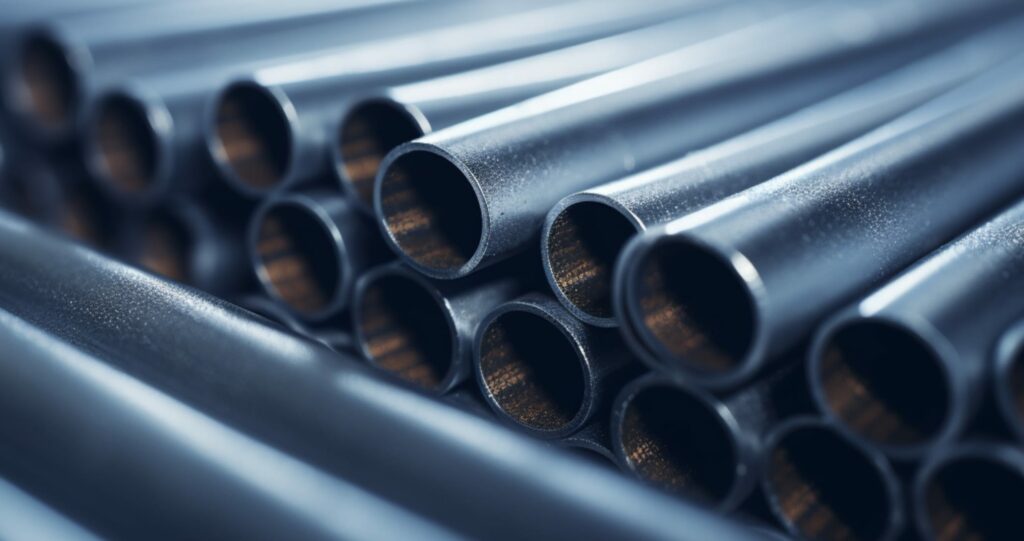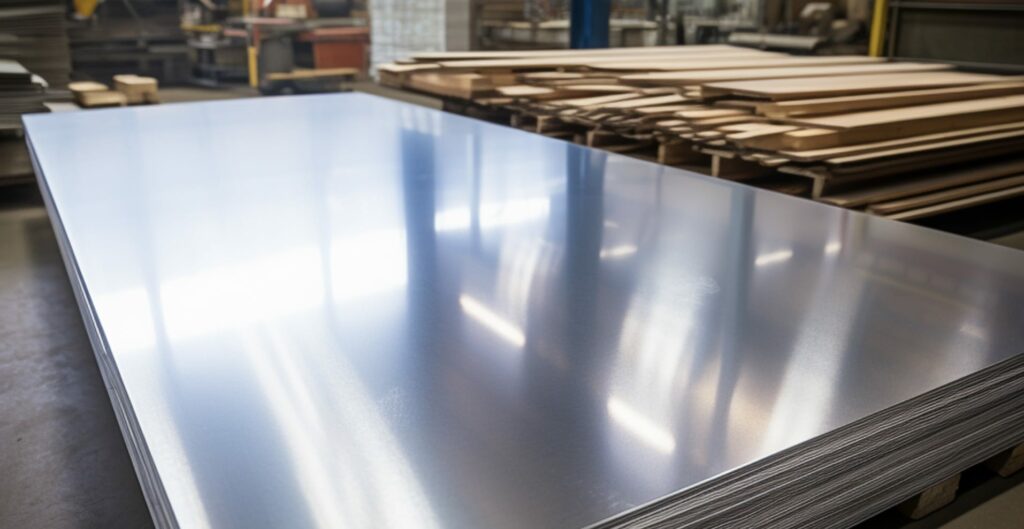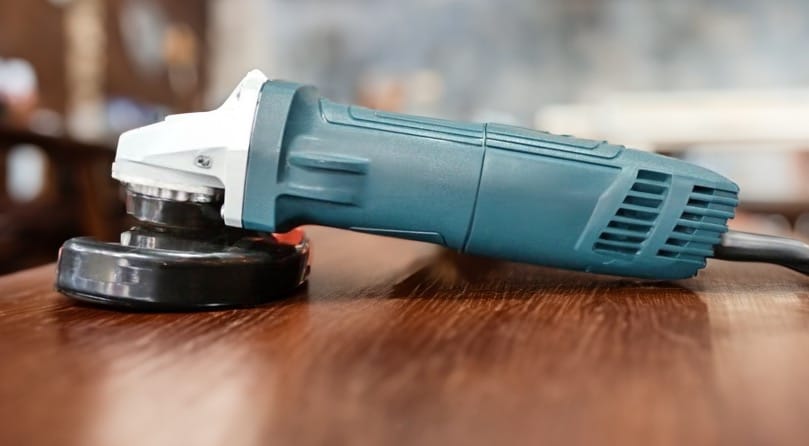I’ve heard this question again and again over the years. Can you actually cut a piece of galvanized steel with an angle grinder?
I mean, galvanized steel is not only reliable but also a bit expensive, meaning you don’t want to mess it up.
And… angle grinders are powerful, no doubt about it. But it’s precisely because of their power that tradesmen fear the tool’s brute force could either damage the protective zinc coating or heat up the steel to a point where it ruins.
So, that’s why I decided to make this quick article trying to get you some real answers.
Let’s go.
The High Stakes of Cutting Galvanized Steel
Galvanized steel is an invaluable material for construction workers (and other tradesmen too!).
I mean, it’s rust-resistant, durable, and very reliable.
But here’s where the rubber meets the road: You’ve got to cut this stuff, and the tool you’re eyeing is your trusty angle grinder.
Now, an angle grinder is like a bull in a china shop; it’s powerful and gets the job done, but it’s not known for subtlety.
So, what are the real risks here?
Firstly, let’s talk about the potential for damage.
An angle grinder is a beast, and while it can cut through a lot of materials easily, galvanized steel requires a delicate touch. One wrong move and you could end up damaging the zinc coating that gives the steel its rust-resistant superpowers.
Secondly, while health risks like zinc fumes may not be directly related to the angle grinder itself, the tool’s high-speed cutting action makes those risks more pronounced.
I mean you’re not just making a simple cut; you’re creating an environment where those nasty fumes can be released more easily (always follow necessary safety precautions!)
So, how do you cut galvanized steel with an angle grinder without ruining it? That’s what we’re diving into next.
Can You Cut Galvanized Steel With an Angle Grinder?
Yes, you can, but let me be straight with you, there are some serious downsides to doing this (which is why I don’t recommend it), such as:
- Toxic Fumes: When you heat up galvanized steel, the zinc coating can release toxic fumes. These fumes are not something you want to breathe in; they’re hazardous to your health. Prolonged exposure can lead to metal fume fever, which is as unpleasant and unhealthy as it sounds.
- Galvanization Damage: Secondly, using an angle grinder on galvanized steel can damage the protective zinc coating. Once that coating is compromised, the steel loses its rust-resistant qualities. You’re essentially undoing the very thing that makes galvanized steel so great in the first place.
- Dust: And don’t forget about the dust. Just like the fumes, the dust generated from cutting galvanized steel can be toxic. It’s another health hazard you’ll need to consider.
So, if you ask me, I’d advise against cutting galvanized steel with an angle grinder. There are safer and more effective methods out there, like using heavy-duty metal shears for thinner sheets or an abrasive saw for thicker pieces.
But hey, if you’re dead set on using an angle grinder, I won’t stop you. Just make sure you’re taking all the necessary safety precautions.
Wear a mask, use proper ventilation, and for heaven’s sake, put on some safety goggles. In my experience, if you’re going to go this route, you better gear up and do it as safely as possible.
How to Cut Galvanized Steel With an Angle Grinder
Here’s what I do when I want to cut galvanized steel with an angle grinder
Using the Correct Disc
I always start by selecting the right disc for my angle grinder. I go for a cutting disc that’s specifically designed for stainless steel or regular steel.
When it comes to the thickness of the disc, I opt for the thinnest one available.
The reason is simple: a thin disc minimizes heat buildup, and too much heat can mess up the zinc coating and even warp the steel.
Using the Correct Technique
When I’m ready to cut, I start the grinder at a slow, steady speed and gradually ramp it up.
I keep the pressure consistent but not too forceful. The idea is to make a smooth cut, not a jagged one.
I’ve found that this approach minimizes the risk of damaging the galvanized coating.
Using Proper Safety Gear and Take Precautions
Safety is a big deal for me, so I don’t skimp on gear.
I put on safety glasses to protect my eyes, wear protective gloves for my hands, and if I’m in an area with poor ventilation, I’ll even wear a reliable particulate filter mask that will keep me from breathing hazardous particles, gases and vapors.
Trust me, those sparks are no joke; they can hurt you. And because angle grinders are loud, I always wear ear protection to avoid any potential hearing damage.
Also, I always ensure that I’m using the angle grinder in a space with good airflow (ventilated space), because inhaling those fumes is a no-go for me. I often set up a suction exhaust system or a fan as an extra precaution to keep the air clean.
Takeaway Tips:
- Use a cutting disc designed for steel.
- Keep the speed and pressure moderate to avoid damaging the material.
- Safety gear isn’t optional; it’s a requirement.
Alternative Methods and Tools for Cutting Galvanized Steel
So, let’s say you’re not entirely convinced about using an angle grinder for your project because of all the risks it poses.
Well… there are several other methods you can use, each with its own set of advantages and disadvantages. Let me give you an idea:
Heavy-Duty Metal Shears
If you’re dealing with thinner sheets of galvanized steel, heavy-duty metal shears are a solid option.
I mean, I’ve used them for smaller projects, and they offer a lot of control allowing you to make precise cuts without generating too much heat, which is great for preserving that all-important zinc coating.
The downside? Well, they’re not the best for thicker materials and can be a bit tiring to use for extended periods.
Abrasive Saws
Now, if you’re working with thicker steel or have a lot of cuts to make, an abrasive saw might be more up your alley.
These saws are fast and can handle thicker materials without breaking a sweat (just like angle grinders can).
But there’s a catch. They generate a lot of heat, and that can be bad news for the zinc coating on your steel.
Oh, and they’re loud, so you’ll need some good ear protection.
Drill Bits
Sometimes you don’t need to make a full cut; you just need a hole. That’s where drill bits come in.
They’re great for precision work and won’t mess up your zinc coating. But keep in mind, they’re pretty specialized.
If you need to make a lot of long cuts, drill bits won’t be much help.
Plasma or Laser Cutters
If you’re looking for precision and have some cash to burn, plasma or laser cutters are the way to go.
These machines offer incredible accuracy and don’t require physical contact with the material, reducing the risk of damaging the zinc coating.
But let’s be real, this equipment is expensive and probably overkill for a simple DIY project.
Post-Cutting Care and Maintenance
There’s a bit more to consider after you’ve cut your galvanized steel.
What else you ask?
Well, there are certain precautions and maintenance tasks you gotta do to the galvanized piece you’ve just cut.
Diamond Blade & Sealant Use
Once you cut into galvanized steel, you’re exposing the inner steel that doesn’t have that protective zinc coating.
This makes it susceptible to rust, especially if it gets wet or is exposed to humid conditions.
I’ve seen plenty of projects go south because people didn’t think about this.
So, what can you do to prevent rust?
One option is to use a diamond blade for cutting. These blades make cleaner cuts and are less likely to leave your steel vulnerable to rust.
After cutting, you should also consider applying some oil or a specialized sealant to the cut edges. This creates a barrier that helps keep rust at bay.
I’ve done this several times, and it really helps in the long run to keep the galvanized steel in pristine state.
Proper Storage and Handling
You’ll want to keep your cut pieces in a dry place.
Moisture is the enemy here, so avoid storing your steel in damp or humid areas. And when you’re handling the cut pieces, it’s a good idea to wear gloves.
This keeps any oils or dirt from your hands off the steel, which can also contribute to rust.
Frequently Asked Questions
What is the best tool for cutting galvanized steel and why?
For thinner sheets, heavy-duty metal shears are great because they give you a lot of control and don’t heat up the metal too much. But if you’re dealing with thicker pieces or have a lot of cutting to do, an abrasive saw is faster and can handle the heavy-duty stuff.
Does cut galvanized steel rust?
Yep, cut galvanized steel can definitely rust. When you cut it, you’re exposing the inner steel that doesn’t have the protective zinc coating. That makes it more likely to rust if it gets wet or is in a humid place. To keep that from happening, you can apply some oil or a special sealant to the cut edges (just like I said)



